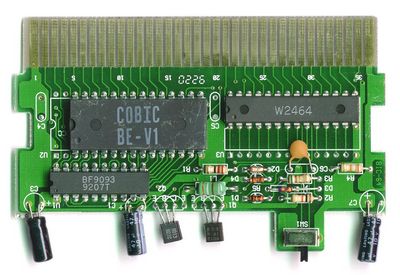Here’s something from my personal archives that is of practial use to almost no one– a gallery of ROM images: http://multimedia.cx/nesgallery/. Technically, they are the printed circuit boards (PCBs) inside the actual NES cartridges. Much of the real estate inside a regulation NES cartridge went unused. I scanned these back when I used to be unusually interested in the technical workings of the classic 8-bit Nintendo Entertainment System and was maintaining a Linux-based NES emulator. Perhaps the most interesting speciman of the set is the PCB for the unlicensed game Bee-52 from Codemasters:

All PCBs for official, licensed games contain at least 3 chips: The PRG ROM (program), the CHR ROM (character/graphic data), and the CIC lockout chip (located next to PRG and CHR ROMs). The NES console had a piece of circuitry that interfaced with the CIC chip and the upshot is that the console refused to run a game cartridge if the CIC chip was not present. Nintendo held a patent on the CIC chip and was, for the most part, able to control which games could be manufactured for the console. Assorted ambitious game houses went the unlicensed route and developed various techniques to circumvent the CIC mechanism. That is what all those hacks on the Bee-52 PCB represent, in lieu of a CIC chip. Notice the switch on the PCB. That’s because when Nintendo rolled out a redesigned top-loading NES console, one of the cost reduction measures was to remove the console-side lockout circuitry. All licensed games continued to play. But it broke the vast majority of unlicensed titles. The switch allows the user to enable or disable the lockout-defeating measures.
Other interesting artifacts to note on the various PCBs are the stock TTL chips or custom mapper chips that games used to break through various limitations of the NES hardware, as well as shiny round batteries which indicate that the user is able to save their game in some RAM area also present on the PCB.
Thanks for publishing this – it was very interesting. I’m frustrated right now that I don’t have any bits to take apart a NES cartridge. When I looked up a how-to guide on Google, it just returned a bunch of sites to buy a bit for NES cartridges. Aw well, maybe that’s what I’ll just do.
I want to try to output data to a basic stamp chip and into a speaker to see what I get = )